The above three drawings were each drawn a month apart by the same 6-year-old girl. You can see that the schema has taken shape. Notice, for example, the recurring grass and the shape of the skirt. The girl first draws the body and then the clothes on top of it.
|
| In this drawing, you can clearly see a first ground line depicted. There's also a clear relationship between the objects; the train is running on the rails (ground line), and beside the rails, there's a tree and a house. The house was probably drawn over the rails later. The colors are still largely preferred colors. The birds, represented as 'V's, are clearly a learned schema. |
| The creator of this artwork utilizes multiple (invisible) ground lines. There is clearly a sense of cropping, particularly at the volcano. The front dinosaur overlaps the volcano and partially overlaps another dinosaur. It's not entirely clear if there's transparency at the top of the volcano or if it represents flowing lava. Object colors have been used. |
| Here, you can clearly see the schemas for the horse and carriage and the castle. The figures on the carriage are drawn entirely from the side. The two standing figures are still very simply represented. Space is suggested through the use of a ground plan. |
| In this drawing, preferred colors are evident. You can also clearly see instances of folding, for example, in the traffic light and the cars. The boy has developed different schemas for various types of cars. There's also a clear schema recognizable in the clouds. |
There's clearly cerebral use of color in this drawing. The paper's edge is still used as the ground plane. Additionally, there's a green area representing grass with a pond. On a ground line, slightly higher than the paper's edge, there's a trampoline. This trampoline uses Egyptian drawn imagery, the ladder. However, the tree is again drawn on the paper's edge. In the house, there's transparency. Sometimes objects are drawn from the side within the house, such as the bunk beds in the attic. Other times, an overhead view is given, such as the blue areas on the second floor, which represent tables with chairs. Clearly, there's been experimentation with spatial representation, but there's not yet consistent use of it.
|
| In this artwork, decorative loop lines have been used. The color usage is cerebral with some preferred colors. The bird is drawn from multiple positions, using what's known as Egyptian perspective, clearly a schema. There's decorative use of flat surfaces. The tree is still placed at the bottom of the paper. The girl clearly hasn't reached the stage of understanding perspective yet. |
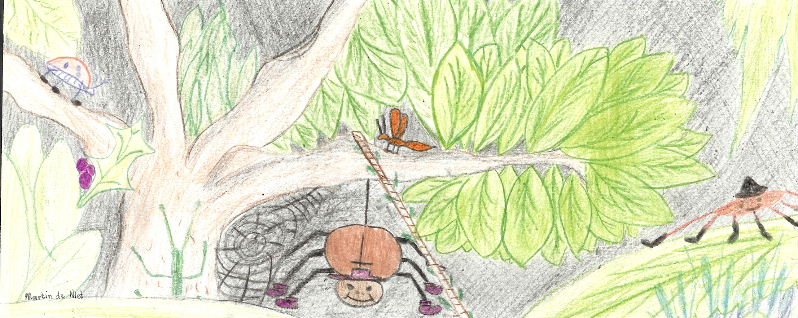 There have been many studies in the field of children's drawings. The views of various researchers differ somewhat. However, everyone agrees on the three stages in the development of visual ability.
There have been many studies in the field of children's drawings. The views of various researchers differ somewhat. However, everyone agrees on the three stages in the development of visual ability.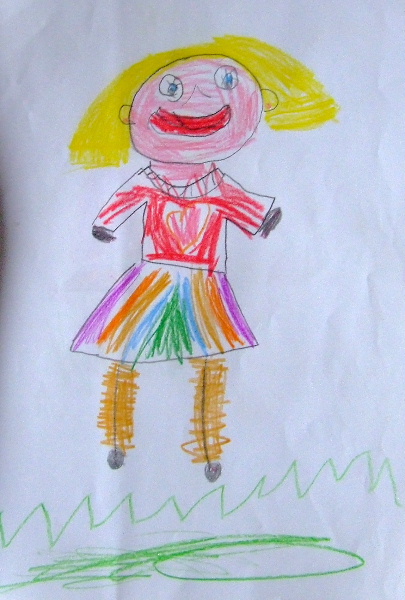
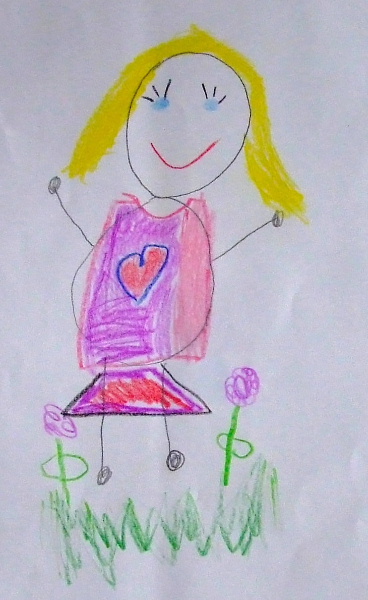
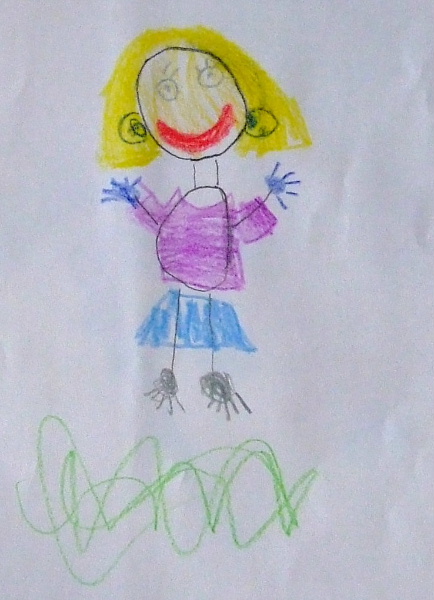
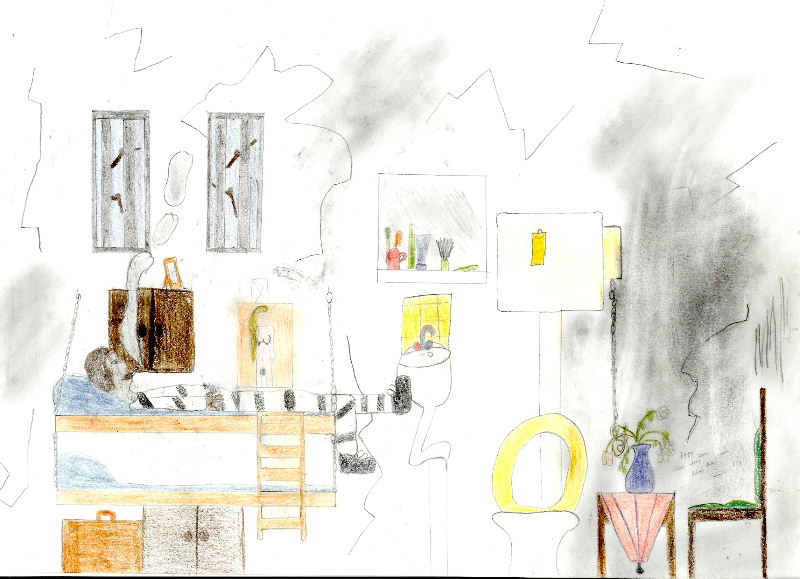
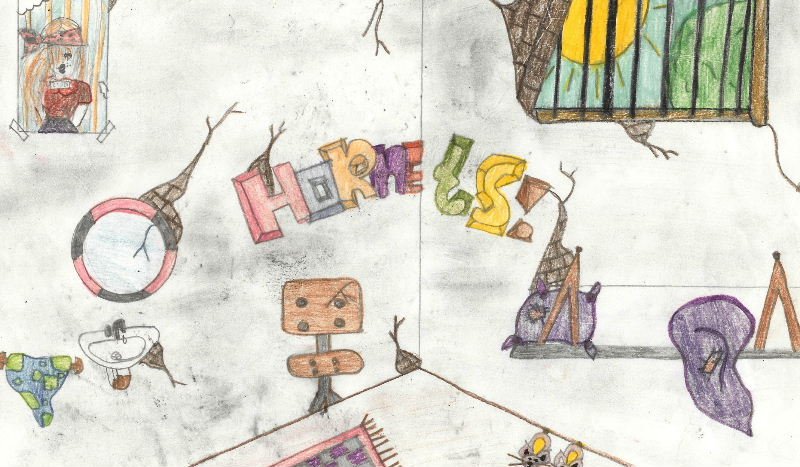
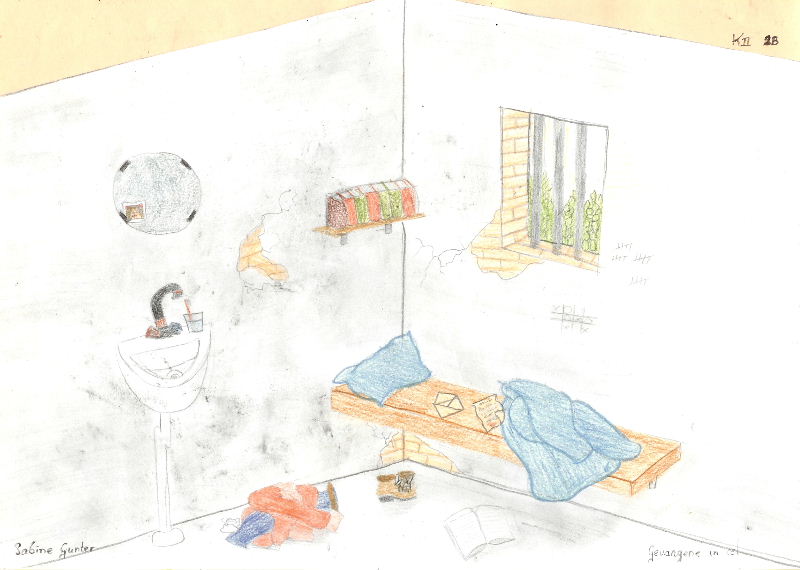
 There have been many studies in the field of children's drawings. The views of various researchers differ somewhat. However, everyone agrees on the three stages in the development of visual ability.
There have been many studies in the field of children's drawings. The views of various researchers differ somewhat. However, everyone agrees on the three stages in the development of visual ability.




